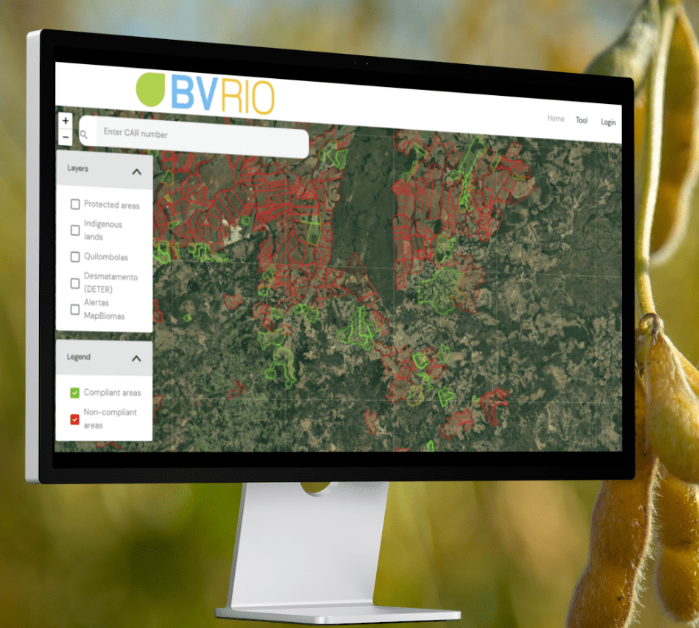Deforestation risk assessment tool hits 11,000 searches in first three months

“The speed at which this tool has been used is fantastic and shows just how important barrier-free access to this information was. Over the coming year, we will be updating the data with new deforestation alerts and developing a report function so users can download the information they find as a PDF,” said Grace Blackham, director of Brazil based green finance experts, BVRio.
There is a wealth of publicly available and trusted data on land use change in Brazil, but there wasn’t an easy way to navigate it and trace soy production back to individual farms, according to BVRio. Building on its experience in creating the Brazilian timber due diligence system, and driven by the increasing demand for agricultural commodity traceability due to regulation tightening, the organization created the soy production map and tool.
The tool assesses deforestation and conversion of native vegetation at the farm level for soy production areas in the Cerrado, Brazil. It also includes Brazilian Forest Code related indicators and other compliance checks. It uses farm location data from the Rural Environmental Registry or Cadastro Ambiental Rural (CAR) in Portuguese. All rural properties must be registered with the CAR. However, the data is self-declared and is not evidence of land ownership.
The platform covers over 92,000 farms, an area of over 61m ha, and, with only a farm CAR Number, users can quickly and easily see if there are any deforestation indicators associated with farms in their supply chain. Farms themselves can also access the free tool to provide data to their buyers.
Insights around users
Asked for additional insights in terms of whether the users are soy buyers or soy producers, a spokesperson for BVRio told FeedNavigator:
“We made the decision to remove any barriers to its use in the first instance - no sign ups or email information - so we don't have specific data on who the users are as a result. Those most likely to have access to farm CAR numbers are the producers themselves, who may wish to use the tool to demonstrate their deforestation free 'status', and the direct soy buyers.”
BVRio can, however, share data on the countries where the users are located: “The analytics show that of the 1.4k unique users, 1.1k are located in Brazil, with over 100 in the US, and then the remainder is split between the UK, the Netherlands, France, Germany and China," added the spokesperson.
EU deforestation regulation
New legislation in the EU will soon require that commodities such as soy are not placed or made available on the EU market, or exported from the EU, unless they are deforestation-free after a cut-off date of December 31, 2020 and have been produced in accordance with the relevant legislation of the country of production.
While the regulation initially only includes forests, thereby excluding much of the Cerrado, it is widely expected that ‘other forested land’ will be included in the first update, and that this will bring the Cerrado under the regulation. Commodities will need to be traced from the farm they are produced on using polygons with sufficient latitude and longitude points to describe the perimeter of the area.
An estimated 52.4m tons of soy is produced annually in the Cerrado, 43% of Brazil’s total production.















